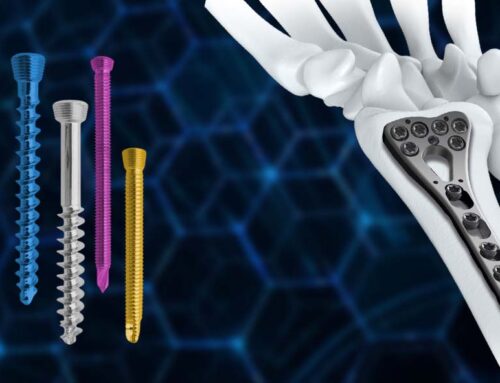Locking screws are one of the vital implants that orthopedic surgeries require to fix a bone related injury and joint pain. It is because of locking screws that a patient can move frequently. These screws keep artificial bones and other implants tightly in place. Locking screw manufacturers in India as HEMC Ortho meet global standards of quality in making such implants and instruments. They manufacture entire gamut of orthopedic implants such as locking screws of all types and sizes to the satisfaction of the surgeons and patients.
Locking screws are required by the surgeons because of their vital importance for a surgery procedure. HEMC Ortho is known for its high quality standards. They keep the quality intact at high level at every phase of manufacturing right from raw material to the finished products.
Why locking screws are so important?
Once, orthopedic surgeons depended on conventional screw system. They have to put in additional efforts to keep the implant system tight and secure. But often the system did not work to the satisfaction and in many cases a repeat surgery was required to deal with the resultant inflammation. The conventional screw system required the surgeon to make precise adaption of the locking plate so that the plate can be fixed to the bone underneath. In addition to this problem, conventional screw method used to pull up the plate toward the screws was tightened. As a result of it, the position of the implants altered, creating more problems for the patients.
Locking screw system has eliminated the requirement of precise fixing of the screw to the locking plate. The locking screw/locking plate system is much easier to use. Because of these screws, the locking plate does not come in the contact of the underlying bones. When the surgeon tightens the screws, the screws are locked automatically to the plate. The whole system gets tightly locked. So, the surgeon does not have to make additional efforts to compress the bone to the locking plate. As a result of it, the chances of the segment position altering are nil. This is because of the insertion of the locking screw system.
The surgeons prefer locking screws also because this system leaves the underneath cortical bone untouched. In the conventional screw system, the surgeons had to compress the underlying surface of the plate. As a consequence, the plate was pressed down to the cortical bone. This caused more surgical complications.
Another reason for the surgeons using locking screw India system is that the screws dig firmly in the plates. These screws are big and strong. This is a crucial advantage as the screws will not loosen from the plate. The locking screw system will remain firm even when the screws are inserted into a fractured gap of the bone. When the surgeon inserts the locking screw through the bone graft, the screw remains firmly placed. As a result, the healing process goes smoothly for the patient.
The incidences of inflammation were much higher in the conventional screw system. This was because the screws loosened very often and it caused an inflammatory response and the resultant infection. The locking screw system has well taken care of that problem. Since the screws are automatically locked and tightly put in place, there is almost no chance of the screws and the hardware system as a whole loosening.



Leave A Comment